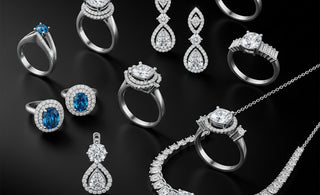
The relationship between gems and jewelry is one of perfect symbiosis—each enhances the other's beauty while creating something greater than the sum of its parts. Gemstones provide the spark of natural wonder, while jewelry settings provide the stage upon which these natural masterpieces can truly shine. Understanding this relationship opens a world of appreciation for both the geological marvels we call gemstones and the artistry required to showcase them properly.
The Ancient Bond Between Gems and Jewelry
The use of gemstones in jewelry dates back to prehistoric times, when early humans first discovered that certain stones possessed exceptional beauty, rarity, or perceived magical properties. Archaeological evidence shows that our ancestors were adorning themselves with polished stones, shells, and crystalline materials as far back as 100,000 years ago, demonstrating that the human attraction to beautiful stones is truly fundamental to our nature.
Throughout history, different civilizations have valued different gemstones for various reasons. Ancient Egyptians prized turquoise and lapis lazuli, incorporating these stones into elaborate jewelry pieces for both the living and the dead. Greeks and Romans favored garnets and pearls, while medieval Europeans developed an obsession with rubies and sapphires that continues to this day. Each culture's preferences reflected not only aesthetic tastes but also available trade routes, local mining capabilities, and cultural beliefs about the mystical properties of various stones.
Cultural Significance Across Civilizations:
Egyptian: Turquoise for protection, lapis lazuli for divinity
Roman: Pearls for purity, garnets for passion
Chinese: Jade for longevity, prosperity, and spiritual harmony
Indian: Diamonds for invincibility, rubies for power
Native American: Turquoise for healing, obsidian for protection

Understanding Gemstone Classifications
The world of gemstones is beautifully complex, with countless varieties offering different colors, properties, and characteristics. Understanding these classifications helps appreciate why certain gems command premium prices while others remain accessible to everyday jewelry lovers.
Precious Stones:
The traditional "big four" precious stones—diamond, ruby, sapphire, and emerald—earn their prestigious designation through exceptional rarity, hardness, and beauty. These gems have commanded the highest prices and greatest reverence throughout history, often adorning royal crowns and ceremonial jewelry.
Semi-Precious Stones:
A vast category encompassing hundreds of gem varieties, semi-precious stones offer incredible diversity in color, pattern, and character. From the banded beauty of agate to the star-like phenomena of star sapphires, semi-precious stones provide endless possibilities for creative jewelry design.
Organic Gems:
Pearls, coral, amber, and jet represent gems created by living organisms rather than geological processes. These organic treasures bring unique textures, colors, and stories to jewelry, connecting wearers to the natural world in profound ways.
The Science Behind Gemstone Beauty
What makes gemstones so captivating goes beyond simple aesthetics—it's rooted in fascinating optical phenomena that occur when light interacts with crystalline structures formed deep within the Earth over millions of years.
Crystal Structure and Light:
Each gemstone's crystal structure determines how it interacts with light, creating the optical properties that make gems so mesmerizing. The way atoms arrange themselves within a crystal lattice affects how light enters, travels through, and exits the stone, creating phenomena like brilliance, fire, and scintillation.
Color Origins:
Gemstone colors arise from various causes—trace elements, crystal defects, or radiation exposure during formation. The presence of chromium creates the red in rubies, while iron content produces the blues and greens found in sapphires. Understanding these color origins helps appreciate why certain color combinations are rare and valuable.
Optical Phenomena:
Special optical effects like asterism (star effects), chatoyancy (cat's eye effects), and adularescence (the blue glow in moonstone) occur when light interacts with specific internal structures within gemstones. These phenomena create unique visual experiences that cannot be replicated artificially.

Popular Gemstones and Their Characteristics
Each gemstone brings its own personality, history, and visual appeal to jewelry design, offering endless possibilities for creative expression.
Diamonds:
Beyond their incredible hardness and brilliance, diamonds offer remarkable versatility in jewelry applications. From classic solitaire engagement rings to elaborate chandelier earrings, diamonds complement every style and occasion. Their ability to enhance and reflect colored light makes them perfect companions for colored gemstones.
Sapphires:
Available in every color except red (which would make them rubies), sapphires offer incredible variety for jewelry designers. Blue sapphires remain the most traditional choice, while pink, yellow, and white sapphires provide contemporary alternatives. Star sapphires add an element of mystery and movement to jewelry pieces.
Emeralds:
The lush green of emeralds has captivated humanity for over 4,000 years. Their inclusions, called "jardin" (French for garden), are not considered flaws but rather proof of authenticity. Emeralds require careful setting and handling due to their natural fractures, making them perfect for showcase pieces rather than everyday wear.
Rubies:
The red variety of corundum, rubies symbolize passion, power, and prosperity across cultures. Fine rubies can command higher prices than equivalent diamonds, especially those with the coveted "pigeon's blood" red color. Their durability makes them excellent choices for engagement rings and heirloom pieces.
Pearls:
Unique among gems for their organic origin, pearls offer lustrous beauty that complements both casual and formal attire. From classic white Akoya pearls to exotic black Tahitians and golden South Sea varieties, pearls provide elegant sophistication that never goes out of style.
Gemstone Cuts and Their Impact on Jewelry Design
The way gemstones are cut dramatically affects their appearance, light performance, and overall impact within jewelry pieces. Master gem cutters spend years perfecting their craft, understanding how to maximize each stone's natural beauty while minimizing any weaknesses.
Traditional Cuts:
Round brilliant, oval, cushion, and emerald cuts represent time-tested approaches to gemstone cutting that maximize light return and visual appeal. These cuts work well with most gemstone types and jewelry settings, making them versatile choices for various applications.
Fancy Cuts:
Pear, marquise, heart, and princess cuts offer more distinctive appearances that can complement specific jewelry designs or personal preferences. These cuts require careful consideration of the gemstone's natural characteristics and intended use.
Cabochon Cuts:
Smooth, rounded cuts without facets, cabochons work particularly well for gems with special optical phenomena like cat's eyes or stars. They also suit softer gemstones that might chip or damage with faceted cuts.
Custom Cutting:
Modern technology allows for increasingly creative gemstone cuts that can be tailored to specific jewelry designs or customer preferences. Custom cutting ensures optimal use of rough gemstone material while creating truly unique pieces.

Setting Styles and Their Relationship with Gems
The way gemstones are set within jewelry pieces affects not only their security and durability but also their visual impact and light performance. Understanding different setting styles helps appreciate the craftsmanship required to showcase gems properly.
Prong Settings:
The most common setting style, prongs hold gemstones securely while allowing maximum light exposure. The number, thickness, and placement of prongs significantly affect both the stone's security and appearance.
Bezel Settings:
Completely surrounding the gemstone with metal, bezel settings offer maximum security while creating clean, modern aesthetics. They work particularly well for softer gemstones or active lifestyles.
Pave Settings:
Multiple small gemstones set closely together create brilliant, carpet-like surfaces that maximize sparkle and visual impact. Pave work requires exceptional skill and precision from jewelry craftsmen.
Channel Settings:
Gemstones set in continuous rows within metal channels create smooth, elegant lines that work well for wedding bands and contemporary designs.
The Emotional and Symbolic Power of Gems in Jewelry
Beyond their physical beauty, gemstones carry deep emotional and symbolic significance that enhances their appeal in jewelry applications. This symbolic power explains why certain gems are chosen for specific occasions and life events.
Birthstones:
The tradition of birthstones creates personal connections between individuals and specific gems, making birthstone jewelry particularly meaningful for gifts and personal pieces. Each month's stone carries its own history, symbolism, and supposed metaphysical properties.
Anniversary Stones:
Traditional anniversary stones commemorate relationship milestones with gems that symbolize the strength and beauty of enduring love. These traditions create emotional connections that transcend mere aesthetics.
Healing and Metaphysical Beliefs:
Many people believe in the healing or spiritual properties of certain gemstones, choosing jewelry based on desired effects rather than appearance alone. While scientific evidence for these properties remains limited, the psychological benefits of wearing meaningful stones can be very real.
Quality Factors in Gemstone Jewelry
Understanding gemstone quality helps make informed decisions when purchasing gem-set jewelry, ensuring that your investment provides lasting beauty and value.
The Four Cs (For Diamonds):
Cut, Color, Clarity, and Carat weight provide standardized criteria for evaluating diamond quality. Each factor affects the stone's appearance, rarity, and value in different ways.
Color Gemstone Evaluation:
For colored stones, beauty and rarity matter more than standardized grading systems. Factors like color saturation, clarity, cut quality, and overall visual appeal determine value and desirability.
Treatment Disclosure:
Many gemstones undergo treatments to enhance their appearance or durability. Understanding these treatments and their effects on value helps make informed purchasing decisions.
Certification:
Reputable gemological laboratories provide certificates that verify gemstone identity, quality, and any treatments. These certificates protect consumers and help ensure fair pricing.

Caring for Gem-Set Jewelry
Proper care ensures that gem-set jewelry maintains its beauty and value over time, protecting both the gemstones and their settings from damage or deterioration.
Cleaning Considerations:
Different gemstones require different cleaning approaches based on their hardness, porosity, and any treatments they may have received. Understanding these requirements prevents damage during routine maintenance.
Storage Practices:
Proper storage prevents scratching, chipping, and other damage that can occur when gemstones come into contact with each other or harder materials.
Professional Maintenance:
Regular professional inspection and maintenance help identify potential problems before they become serious, ensuring that prongs remain secure and stones stay properly positioned.
Investment Potential of Gem-Set Jewelry
While jewelry should primarily be purchased for enjoyment and personal satisfaction, understanding the investment potential of gem-set pieces can influence purchasing decisions and care practices.
Factors Affecting Value:
Rarity, quality, craftsmanship, and market demand all influence the long-term value of gem-set jewelry. Understanding these factors helps identify pieces with strong investment potential.
Market Trends:
Gemstone markets fluctuate based on various factors including new discoveries, fashion trends, and economic conditions. Staying informed about these trends can help with timing purchases and sales.
Heirloom Considerations:
The most valuable aspect of many gem-set jewelry pieces is their emotional and family significance rather than pure monetary value. Choosing pieces that will be treasured by future generations often provides the best long-term satisfaction.
Sustainable and Ethical Considerations
Modern consumers increasingly consider the ethical and environmental implications of their gemstone purchases, driving changes in mining practices and supply chain transparency.
Responsible Sourcing:
Ethical gemstone sourcing ensures that mining operations respect human rights, provide fair wages, and minimize environmental impact. Many jewelers now provide documentation of their stones' origins and mining practices.
Lab-Grown Alternatives:
Technological advances have made lab-grown gemstones virtually indistinguishable from natural stones while offering guaranteed ethical sourcing and often lower prices. These alternatives provide options for environmentally conscious consumers.
Recycled Gems:
Antique and estate jewelry provides access to beautiful gemstones with established provenance, allowing consumers to enjoy precious stones without supporting new mining operations.
Future Trends in Gemstone Jewelry Design
The world of gemstone jewelry continues evolving, with new technologies, changing aesthetics, and shifting consumer preferences driving innovation in design and manufacturing.
Technology Integration:
Advanced cutting techniques, 3D printing for settings, and computer-aided design tools are expanding the possibilities for creative gemstone jewelry design while improving precision and reducing waste.
Alternative Gemstones:
Previously overlooked gem varieties are gaining popularity as consumers seek unique alternatives to traditional stones. Gems like spinel, tanzanite, and paraiba tourmaline offer distinctive beauty and rarity.
Sustainable Innovation:
New technologies for creating synthetic gemstones and recycling precious metals are making sustainable luxury jewelry more accessible and appealing to environmentally conscious consumers.
Conclusion: The Eternal Appeal of Gems in Jewelry
The combination of gemstones and jewelry represents one of humanity's most enduring art forms, blending natural wonder with human creativity to create objects of lasting beauty and significance. From ancient amulets to contemporary statement pieces, gem-set jewelry continues to captivate, inspire, and delight people across cultures and generations.
Understanding the complex relationship between gems and jewelry—encompassing everything from geological formation to cutting techniques, from symbolic meaning to care requirements—enhances appreciation for these remarkable creations. Whether choosing a piece for its investment potential, emotional significance, or simple beauty, knowledge of gemstones and their role in jewelry helps ensure satisfaction with your selections.
As technology advances and consumer preferences evolve, the world of gemstone jewelry will undoubtedly continue changing and growing. However, the fundamental human attraction to beautiful stones set in precious metals seems destined to endure, ensuring that gems will continue playing starring roles in the jewelry of the future just as they have throughout human history.

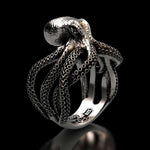 Rings
Rings
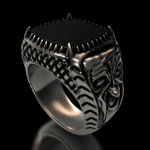 Gemstone Rings
Gemstone Rings
 Pendants
Pendants
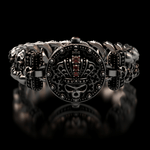 Bracelets
Bracelets
 Keycaps
Keycaps
 Earrings
Earrings
 Chains
Chains
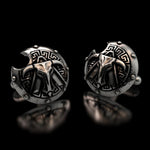 Cufflinks
Cufflinks
 Lapel Pins
Lapel Pins
 Accessories
Accessories
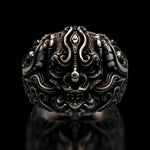 Men’s
Men’s
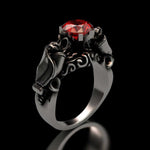 Women’s
Women’s
 Military
Military
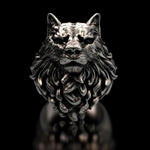 Animal
Animal
 Skull & Biker
Skull & Biker
 Mythology
Mythology
 Religious
Religious
 Zodiac
Zodiac
 Movie & Game
Movie & Game
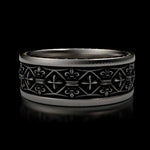 Wedding Band
Wedding Band

